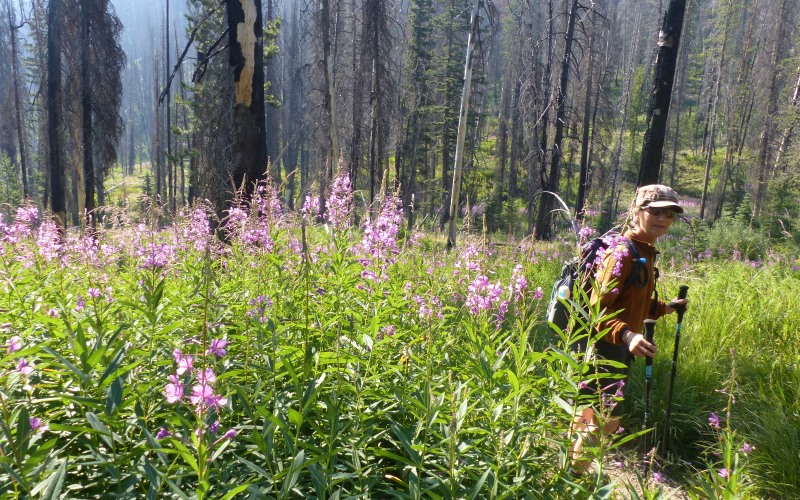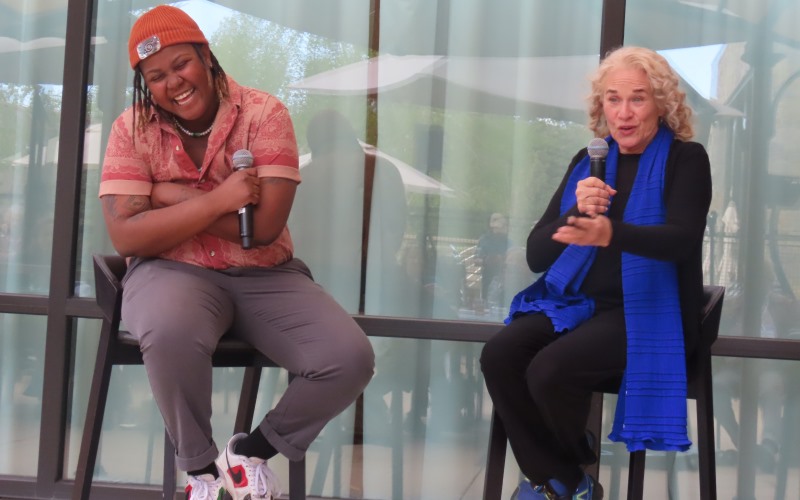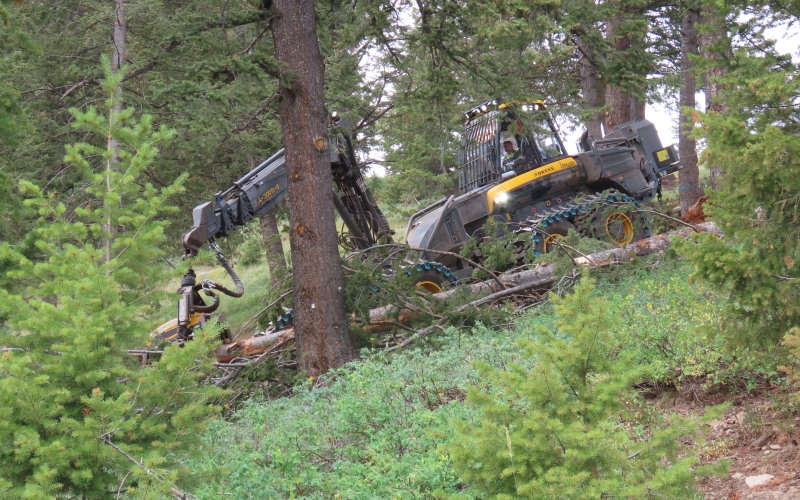|
STORY AND PHOTO BY KAREN BOSSICK Carole King was quick to point out that she had named the title of her presentation at this week’s Sun Valley Forum “Fire and Rain.” It was a play on the song that she and her friend James Taylor had performed together. And, she said, it was a fitting description of a presentation examining the effect of federal policies on wildfire. The singer/songwriter has long advocated for the Northern Rockies Ecosystem Protection Act, which would protect intact ecosystems in Idaho and surrounding states from roads, deforestation and other development to provide the necessary habitat for grizzly and other wildlife.
|
|

Ecologist Chad Hanson says dead snags left over from fire should remain standing as they are a essential to biodiversity.
|
|
|
But at the Forum, which brought together scientists and innovators striving to mitigate climate change, she turned her attention to the issue of logging. King showed a film clip of a feller buncher as the machine grabbed a tree, sawed through the bottom, stripped the limbs off and deposited it in a slash pile in a matter of a few minutes. “The amount of carbon that logging emits is comparable to coal burning for a year in the United States,” she said. “It’s horrifying. Taxpayers subsidize clearcutting so our taxpayer dollars are going towards subsidizing fossil fuels.” King has lived in Idaho since 1977, many of those early years spent on Robinson Bar Ranch on the Salmon River east of Stanley. She also has a condo in Ketchum.
|
|

Carole King relished the opportunity to talk with a young man at the Sun Valley Forum who helped file a lawsuit against the U.S. government to make it accountable for its role in climate change.
|
|
|
During the Forum hosted by Christensen Global she was focused on the Clearwater National Forest, which is north of the Salmon River and part of the largest temperate rainforest in United States. There, Friends of the Clearwater have filed a case against the U.S. Forest Service to prevent massive clearcuts in biodiverse old growth forest and sensitive watersheds. “If it happens in the Brazilian Amazon, we call it ‘logging.’ If it happens in the United States, the Forest Service and logging companies call it ‘restoration’ and ‘making forests resilient,’ ” she said. “We need to take care of our own forests at home even as we encourage other countries to protect theirs.” Katie Bilodeau, staff attorney for Friends of the Clearwater, noted that clearcutting allows snow to melt earlier and erases the shade needed to keep streams cold enough for kokanee salmon to survive. The sediment running off clearcut slopes and roads cut for logging degrades streams and buries the cobble that fish need for hiding and spawning. Such operations emit three times more carbon into the atmosphere than wildfire, she said.
|
|

National Forest Foundation spokesperson Marcus Selig told those attending the Sun Valley Forum that operations to remove dead and diseased trees, such as this one on Bald Mountain, have a place in a healthy ecosystem.
|
|
|
“Once you’ve clearcut these areas, they can no longer be protected.” Chad Hanson, ecologist for the John Muir Project, obtained a Ph.D. in Ecology from the University of California-Davis with a focus on forest and fire ecology after witnessing what he called the devastation caused by commercial logging while hiking the 2,700-mile Pacific Crest Trail. He told those attending the Forum at The Argyros that the Forest Service has proposed massive logging programs in national forests under the guise of ‘thinning trees’ or ‘fuel reduction’ to eliminate high-intensity fire from the landscape. Thinning does not stop fires, he argued, and fires often burn hotter and faster in areas that have been thinned. Thinning is not a fire management solution but a narrative to keep outdated logging operations going, he said.
“The Forest Service is under the U.S. Department of Agriculture,” added King. “Why? Because trees to our government are a crop. Think about that!” said King. “We say we need to cut down trees because they’re fuel. No, we need to leave them there.” The Forest Service justifies large post-fire clearcut logging projects out of the belief that some forests will not naturally regenerate in large high-intensity fire patches, Hanson said. But studies show that some trees like sequoia need those kinds of high-intensity fire patches to regenerate, he added. Canopy cover helps surface fuels stay moister; thinning does the opposite, he said. Mechanical thinning decreases carbon storage in conifer forests. A new paradigm has begun to emerge, purporting that high-intensity fires have historically occurred naturally in most western forests, he said. Ecologically healthy forests are those that have an abundance of low-, moderate-, and high-intensity fire effects.
Dead trees and snags are an ecological treasure trove that birds and wildlife depend on, he added. Hanson had barely finished speaking when Marcus Selig, vice president of Field Programs for the National Forest Foundation, offered some contrasting views. The National Forest Foundation has been involved in Healthy Forest Initiatives, including one on Bald Mountain being done in conjunction with the Forest Service, Bureau of Land Management and Sun Valley Resort. There it’s weeding out dead and diseased trees to reduce high fuel loads that are the result of decades of fire suppression, insect infestations and drought.
“It’s necessary to thin trees to create space for fire to move safely,” he said. “That means cutting not the large trees but small trees that have moved in.” WHITHER THE NORTHERN ROCKIES ECOSYSTEM PROTECTION ACT? Carole King noted that she has been working to get Congress to pass the act for 32 years. “It’s still alive. It’s been reintroduced every session since 1992, but the actual accomplishment of getting tit done hasn’t happened yet,” she added.
For years heard it’s too big but that’s what we needed to protect. What I’ve been working on for 32 years.
|